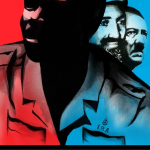Social Media Campaign Review – Michael Hoban
- Social Media
Invisible Children’s ‘Kony 2012’ Campaign – The most effective social media campaign yet?
 If you don’t know who Joseph Kony is, you do now. Anyone with a social media life would’ve been unable to ignore the introduction of the Kony 2012 campaign to multiple social media platforms.
If you don’t know who Joseph Kony is, you do now. Anyone with a social media life would’ve been unable to ignore the introduction of the Kony 2012 campaign to multiple social media platforms.
Since the emergence of social media as a key business tool a few years ago, the web has been besieged with innovative social media campaigns. Facebook, YouTube and Twitter have frequently been used to plug new products and raise a person’s profile. However Kony 2012 has taken social media campaigns to a whole new level and this example is the pinnacle of promotional practise.
Kony 2012 is the brainchild of the Invisible Children movement and filmmaker Jason Russell. Their aim? Make Joseph Kony famous – but for all the wrong reasons.
Joseph Kony is the leader of the Ugandan Lord’s Resistance Army (LRA) and is responsible for over 30,000 deaths across four countries – Uganda, Sudan, South Sudan and the Democratic Republic of Congo. More shockingly his organisation has abducted an estimated 60,000 children, forcing them to fight for the LRA. As a result, Invisible Children created the Kony 2012 campaign. Its principal aim is to raise support for Kony’s arrest and ‘set a precedent for international justice’.
In a matter of days the campaign has quite literally exploded on a global scale out of nowhere.
On YouTube, the Kony 2012 viral – posted only two days ago (at the time of writing) – has attracted over 32 million views, more than 800,000 likes and prompted 200,000 comments. The 30-minute video evokes a plethora of emotions and instils a lasting feeling that humanitarian intervention is imperative and, after this campaign, hopefully imminent.
On Twitter, using the hashtag #stopkony, the campaign is currently the #1 trending topic worldwide. It has been brought to the attention of global superstars including Rihanna, Oprah, P.Diddy and Justin Bieber, who have a combined following of over 47 million people.
It’s a similar story on Facebook. The official Invisible Children Facebook page has amassed 2 million likes and has resulted in a number of independent ‘Stop Kony’ activist groups.
Even the Kony2012 website is ingeniously constructed to generate as much of a stir as possible. Visitors to the site can ‘sign the pledge’ in a petition to bring Joseph Kony to justice. A variety of ‘Stop Kony’ merchandise is also available including t-shirts and posters.
The innovative Invisble Children movement have even added sections under the headings ‘the policymakers’ and ‘the culturemakers’. By clicking on one of the policymakers or culturemakers, visitors are instantaneously directed to Twitter were they can essentially lobby key influential stakeholders and decision-makers.
Social Media has traditionally been utilised as a business tool for promotional activity and interaction with publics. Until now social media had seldom been used as a platform for political and humanitarian activism – at least not on this scale.
The rise of social media itself was a phenomenon, seemingly ascending out of nowhere. Kony2012 is even more so a phenomenon, gathering pace at a rate that even the platforms it dominates could not emulate.
Kony2012 has already reached in excess of 100m people worldwide in a matter of days. In comparison to the social media channels it currently commands, it took Twitter 780 days and Facebook 852 days to reach the 10 million user mark.
But don’t be dazzled by the numbers, statistics and technicalities of this humane campaign. The beauty of Kony 2012 is that it has given a voice to people who, otherwise, wouldn’t have been heard. The majority of Ugandan, Sudanese and Congolese inhabitants have probably never even heard of social media but little do they know it may in fact become their saviour.
Joseph Kony – we know who you are. #StopKony.